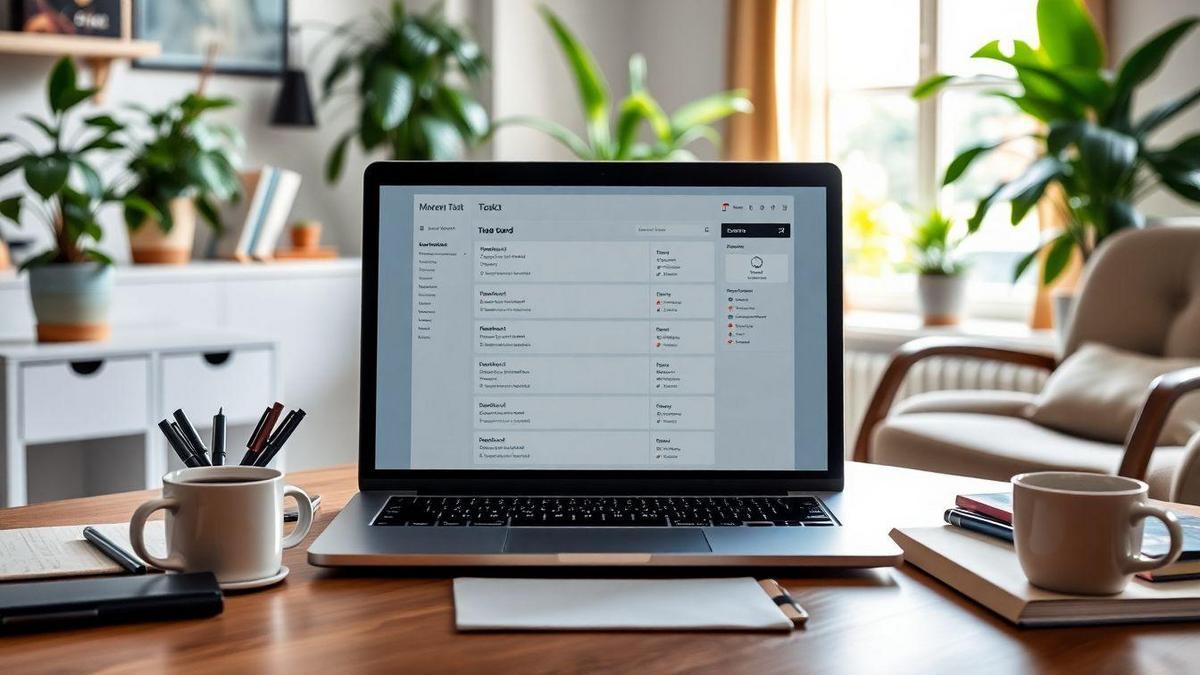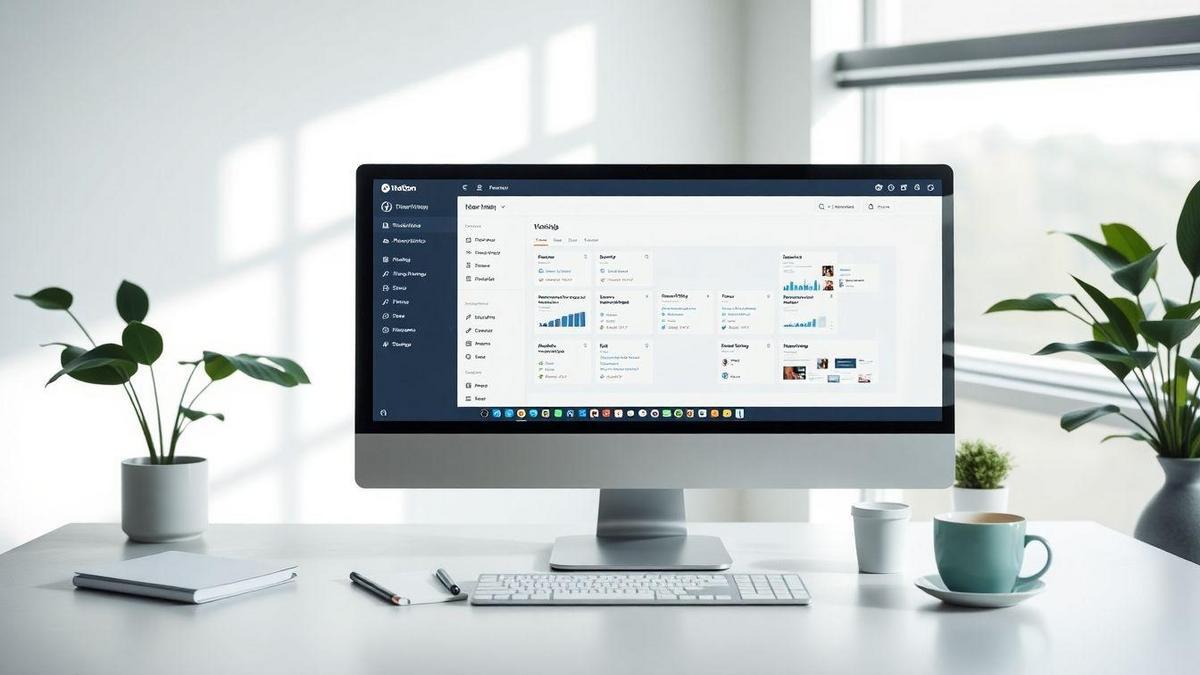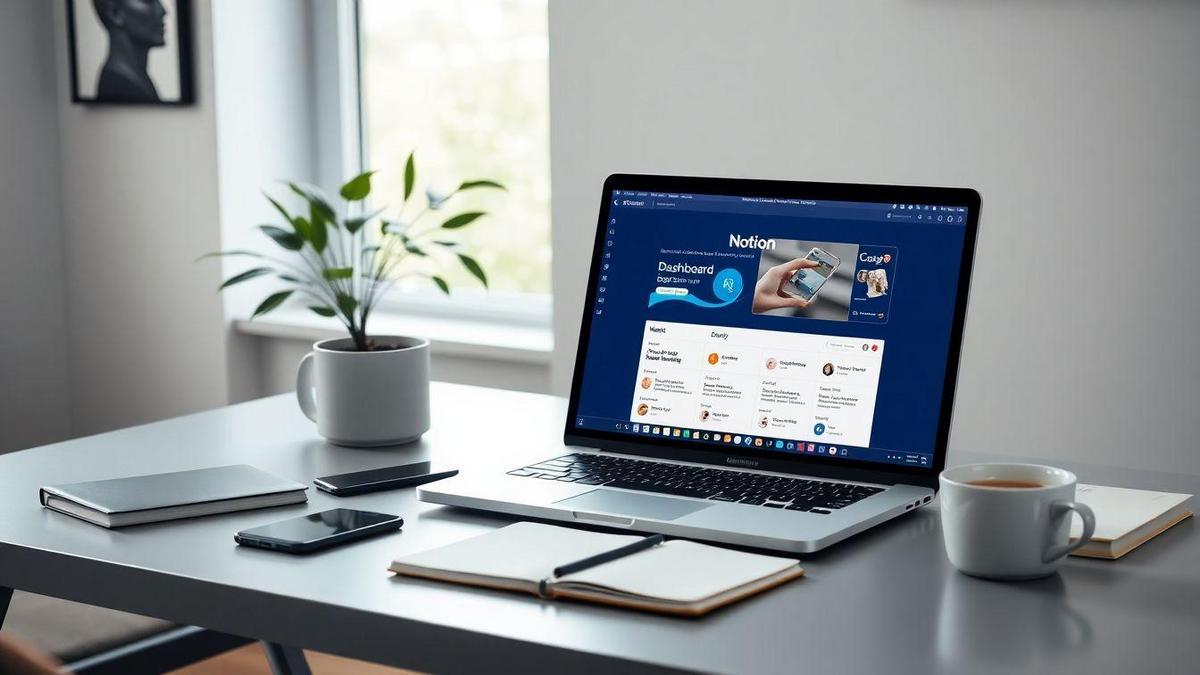Want to learn how to use Notion to create a website task board? You’re in the right place! In this article, we’ll explore how to organize your tasks, work better with your team, and customize your board to suit your needs. Say goodbye to chaos and hello to a streamlined way of managing your projects. Let’s get started!

Benefits of Using Notion to Create a Website Task Board
Streamlined Task Organization
Using Notion to create a website task board is a game changer for keeping your tasks in check. Imagine having all your tasks neatly lined up in one place. No more sticky notes flying around or endless email threads! You can easily create lists, set deadlines, and add notes.
Here’s how it helps:
- Centralized Information: Everything you need is right there. You can see what needs to be done at a glance.
- Customizable Views: Want to see tasks by priority? Or perhaps by due date? With Notion, you can switch views to fit your needs.
Enhanced Team Collaboration
When you’re working with a team, communication is key. Notion makes it easy for everyone to stay on the same page. You can share your task board with teammates, so they know what’s going on without the back-and-forth emails.
Here’s what makes collaboration shine:
- Real-Time Updates: Everyone can see changes as they happen. This means no more waiting for updates or wondering if someone is on the same page.
- Comments and Feedback: Team members can leave comments directly on tasks. This makes it simple to ask questions and get feedback without jumping between different apps.
Why Teamwork Matters in Project Management
Teamwork is the backbone of successful projects. When everyone works together, tasks get done faster and better. Good communication leads to fewer mistakes and a smoother workflow.
Here’s why it’s crucial:
| Benefit | Explanation |
|---|---|
| Faster Problem Solving | Teams can brainstorm solutions quickly. |
| Shared Knowledge | Everyone brings their skills to the table. |
| Increased Motivation | Working together boosts morale and accountability. |
In a nutshell, using Notion to create a website task board not only keeps you organized but also enhances how your team collaborates. It’s a win-win for getting things done efficiently!
How to Set Up Your Notion Task Board
Step-by-Step Guide to Create a Website Task Board
Creating a task board in Notion is like building your own digital workspace. Here’s how you can do it, step by step:
- Create a New Page: Open Notion and click on “New Page.” Give it a name like “Website Task Board.”
- Choose a Template: Notion has great templates. Select “Board” to start with a Kanban-style layout.
- Add Columns: Think of each column as a stage in your project. You can label them “To Do,” “In Progress,” and “Done.”
- Add Tasks: Click on “New” under the “To Do” column. Write down tasks like “Design homepage” or “Write blog post.”
- Assign Team Members: If you’re working with a team, tag them on tasks. This way, everyone knows who’s doing what.
- Set Deadlines: Click on the task and add a due date. This keeps everyone accountable.
- Prioritize Tasks: Drag and drop tasks to rearrange them based on priority.
Tips for Customizing Your Notion Project Management
Customizing your Notion board can make it feel like your own. Here are some handy tips:
- Use Icons: Add fun icons to your tasks. It makes the board visually appealing.
- Color Code: Use colors to highlight different statuses or priorities. For example, red for urgent tasks.
- Add Checklists: Break down tasks into smaller steps by adding checklists. This helps you track progress easily.
- Integrate Links: Link to other pages or resources. This keeps everything connected.
Making It Work for Your Team’s Needs
To make your Notion task board work for your team, keep these points in mind:
- Regular Updates: Schedule weekly check-ins. This helps everyone stay on the same page.
- Feedback Loop: Encourage team members to share thoughts on the board. This way, everyone can contribute ideas.
- Adaptability: Be open to changing the board layout or tasks as your project evolves. Flexibility is key!

Essential Features of Notion for Web Development
Integrating Templates for Tasks
When you dive into Notion, one of the first things you’ll notice is how easy it is to integrate templates for your tasks. Imagine having a ready-made framework that helps you kickstart your projects! You can find templates for everything from to-do lists to project trackers.
Here’s how to get started:
- Browse Templates: Notion has a gallery of templates. Just click on “Templates” in the sidebar.
- Select and Customize: Pick a template that fits your needs. You can customize it to match your workflow.
- Save Your Favorites: Once you find a template you love, save it for quick access later.
Using templates can save you time and help you stay organized. It’s like having a cheat sheet for your tasks!
Utilizing Database Functions in Notion
Databases in Notion are like your personal command center. They allow you to store, manage, and view your data in a way that makes sense for you. Here’s how you can take advantage of these database functions:
- Create a Database: Start by creating a new page and selecting Database.
- Add Properties: You can add various properties like text, numbers, dates, and more. This makes your database versatile.
- Filter and Sort: Use filters to see only what you need. Sorting helps you arrange your tasks in a way that works for you.
Databases can help you keep track of your projects, deadlines, and even team members. It’s like having a digital filing cabinet that’s always organized!
The Power of Custom Views in Task Management
Custom views are where the magic happens. They allow you to see your tasks in different ways. Here’s why you should use them:
| View Type | Description |
|---|---|
| Table View | Great for seeing all tasks at once. |
| Board View | Perfect for visualizing tasks in different stages. |
| Calendar View | Ideal for tracking deadlines and schedules. |
You can switch between these views based on what you need at the moment. If you’re in a brainstorming session, a board view might be best. But when it’s time to meet deadlines, the calendar view is your best friend.
Comparing Notion with Other Project Management Tools
Notion vs. Trello: Which is Better for You?
When you’re thinking about project management tools, Notion and Trello often pop up. Both have their perks, but which one fits your style best?
- Trello is like a digital sticky note board. You can move cards around, making it super visual. If you love seeing tasks laid out in front of you, Trello might be your jam.
- Notion, on the other hand, is more of a blank canvas. You can create databases, wikis, and even calendars. If you enjoy customizing your workspace, Notion gives you that freedom.
So, if you prefer a straightforward, visual approach, Trello might be the way to go. But if you want to mix and match different tools in one place, Notion to create a website task board could be your best bet.
Why Choose Notion Over Asana for Website Projects?
Now, let’s dive into how Notion stacks up against Asana for website projects.
- Asana is great for tracking tasks and deadlines. It’s straightforward and keeps you organized.
- Notion offers a bit more flexibility. You can create different views, like lists or tables, and add notes or files right where you need them.
If you’re working on a website project, you might find Notion’s flexibility helpful. You can build a task board that fits your needs perfectly.
Key Differences That Matter for Your Workflow
Here’s a quick comparison of Notion and Asana:
| Feature | Notion | Asana |
|---|---|---|
| Customization | High – create your own layouts | Limited – pre-set templates |
| Visual Layout | Flexible – tables, lists, etc. | Linear – task lists |
| Collaboration | Easy – share pages | Simple – task assignments |
| Integration | Many options | Strong with other tools |
In summary, if you’re looking for a tool that can adapt to your unique workflow, Notion is a solid choice. It allows you to create a website task board that works for you.

Best Practices for Website Workflow Management in Notion
Setting Realistic Deadlines for Tasks
When you’re managing tasks in Notion to create a website task board, setting realistic deadlines is key. Think of deadlines as your guiding stars. They help you stay on course. Here are some tips to keep in mind:
- Break down tasks: Instead of looking at a big project, break it into smaller, manageable tasks. This makes it easier to set deadlines.
- Consider your team’s workload: If your team is juggling multiple projects, don’t overload them. Be mindful of their capacity.
- Use time estimates: For each task, guess how long it might take. This gives you a clearer picture of when things can realistically be done.
Regularly Updating Your Task Board
Keeping your task board fresh is like watering a plant. It needs regular attention to thrive. Here’s how to keep it updated:
- Daily check-ins: Spend a few minutes each day reviewing tasks. Are they on track? Do they need adjustments?
- Celebrate completions: When a task is done, mark it off! This not only keeps the board tidy but also boosts team morale.
- Adjust as needed: If a task is taking longer than expected, don’t hesitate to move deadlines or reassign tasks.
Keeping Your Team on Track with Notion
Your team’s success hinges on clear communication and organization. Notion can help with that. Here’s how to keep everyone aligned:
| Method | Description |
|---|---|
| Shared boards | Everyone can see what’s happening at a glance. |
| Comments section | Team members can ask questions and provide updates. |
| Notifications | Set reminders for deadlines to keep everyone alert. |
By using these tools, you can keep your team on the same page. It’s like having a well-oiled machine where everyone knows their role.
Tips for Effective Task Organization in Notion
Categorizing Tasks for Better Clarity
When you use Notion to create a website task board, the first step is to categorize your tasks. Think of it as sorting your laundry. You wouldn’t mix whites with colors, right? The same goes for your tasks!
Start by creating categories that make sense to you. Here are some ideas:
- Design
- Content Creation
- Marketing
- Technical Issues
Each category helps you see what needs to be done at a glance. It’s like having a clear roadmap instead of wandering around in the dark.
Using Tags and Labels in Your Notion Task Board
Tags and labels are like the seasoning in your favorite dish. They add flavor and help you find what you need quickly. In Notion, you can add tags to each task based on priority or status.
For example, you could use labels like:
- Urgent
- In Progress
- Completed
This way, you can filter tasks easily. Want to focus on urgent tasks? Just click on that tag, and voilà! You’ve got a focused list ready to go.
| Task | Category | Status | Priority |
|---|---|---|---|
| Update homepage | Design | In Progress | Urgent |
| Write blog post | Content Creation | Not Started | High |
| Launch ad campaign | Marketing | Completed | Medium |
How to Prioritize Tasks Effectively
Now, let’s talk about prioritizing tasks. Not every task is created equal. Some are more important than others. Here’s a simple way to prioritize:
- Identify Deadlines: What needs to be done first? Tasks with deadlines should be at the top of your list.
- Assess Impact: Which tasks will have the biggest impact on your project? Focus on those.
- Break It Down: If a task feels too big, break it into smaller steps. This makes it less overwhelming.
When you lay out your tasks this way, it’s easier to tackle what matters most. You’ll feel like a superhero crossing off tasks one by one!

Integrating Notion with Other Tools for Project Tracking
Connecting Notion with Google Drive
Linking Notion with Google Drive is like having a powerful sidekick for your projects. Imagine being able to access all your files right from your Notion workspace. You can easily link your Google Drive documents, spreadsheets, and presentations to your Notion pages. This way, everything you need is in one spot, saving you time and hassle.
To connect Notion with Google Drive, follow these simple steps:
- Open Notion and go to the page where you want to add a Google Drive link.
- Click on the button or type /embed to add an embed block.
- Choose Google Drive and paste the link to your file.
- Hit Embed, and voilà! Your Google Drive file is now accessible in Notion.
This integration makes it easier for you to keep track of your work. You can update documents in Google Drive, and they will reflect in Notion, keeping everything in sync.
Using Zapier to Automate Your Workflow
If you’re looking to save time, Zapier is your best friend. It lets you connect different apps and automate tasks. For example, you can set it up so that when you create a new task in Notion, it automatically adds a corresponding event to your Google Calendar. This way, you won’t miss any deadlines!
Here’s how you can set up a simple Zap:
- Sign up for Zapier and create a new Zap.
- Choose Notion as your trigger app and select what action you want (like creating a new task).
- Choose your action app (like Google Calendar) and set what you want it to do (like adding an event).
- Test your Zap and turn it on!
With Zapier, you can connect Notion to many other apps, helping you streamline your workflow and keep things running smoothly.
Enhancing Productivity with Integrations
Integrating Notion with tools like Google Drive and Zapier can really boost your productivity. Here’s a quick look at how these integrations can help:
| Integration | Benefits |
|---|---|
| Notion Google Drive | Access files easily, keep everything organized |
| Notion Zapier | Automate tasks, save time on repetitive work |
By using these tools together, you can create a seamless project tracking experience. You’ll have everything you need at your fingertips, making it easier to focus on what truly matters.
Real-Life Examples of Notion Templates for Tasks
Popular Notion Templates for Website Development
When you think about building a website, you might feel a bit overwhelmed. But Notion can help! There are some great templates out there that make website development a breeze. Here are a few popular ones:
| Template Name | Description |
|---|---|
| Web Project Tracker | Keeps all your tasks and deadlines in one spot. |
| Design Brief | Helps you outline your design needs and goals. |
| Content Calendar | Organizes your blog posts and updates easily. |
These templates are like having a roadmap. They guide you step-by-step through the process. You can track your progress and never lose sight of your goals.
Customizing Templates for Your Unique Projects
Now, you might be thinking, “But I want something that fits my style!” That’s the beauty of Notion! You can customize these templates to match your needs. Here’s how you can do it:
- Change Colors: Make it pop with colors that speak to you.
- Add Sections: If you need more space for ideas, just add a new section!
- Use Icons: Icons can make navigation fun and easy.
By customizing, you make the template yours. It becomes a tool that works for you, not the other way around.
Finding Inspiration from Other Users
Sometimes, the best ideas come from seeing what others have done. You can find tons of inspiration in Notion’s community. Check out:
- Social Media: Look for groups or hashtags related to Notion.
- YouTube: Many users share their setups and tips.
- Notion Templates Gallery: Browse through existing templates for fresh ideas.
Seeing how others use their templates can spark your creativity. You’ll discover new ways to set up your own tasks.

Overcoming Challenges in Using Notion for Task Management
Common Issues Users Face with Notion
Using Notion can feel like a double-edged sword. On one hand, it’s a fantastic tool for organizing your tasks, but on the other, it can throw some curveballs your way. Here are a few common issues you might encounter:
- Overwhelm: With so many features, it can feel like a lot to take in. You might find yourself lost in a sea of options.
- Complexity: Setting up your workspace can be tricky. It’s easy to get bogged down in the details.
- Syncing Problems: Sometimes, changes don’t sync as quickly as you’d like, which can be frustrating.
Solutions to Improve Your Experience
Don’t worry! There are ways to tackle these challenges head-on. Here’s how you can make your experience with Notion smoother:
| Issue | Solution |
|---|---|
| Overwhelm | Start with a simple layout and gradually add features. |
| Complexity | Use templates to get a head start on organization. |
| Syncing Problems | Ensure you have a stable internet connection and refresh the app. |
Tips for Staying Motivated While Using Notion
Staying motivated can be half the battle. Here are some tips to keep your spirits high while using Notion:
- Set Small Goals: Break down your tasks into bite-sized pieces. Celebrate when you check them off!
- Customize Your Space: Make your Notion workspace feel personal. Use colors and icons that inspire you.
- Regular Check-ins: Schedule time to review your tasks. This keeps everything fresh and on your radar.
With these strategies, you can turn Notion into a powerful ally for managing your tasks. Just remember, it’s all about finding what works best for you!
Frequently Asked Questions
What is Notion to Create a Website Task Board?
Notion to create a website task board is a tool that helps you manage tasks for your website. You can organize and track everything in one place.
How can I start using Notion for my website tasks?
To start using Notion, sign up for an account. Then, create a new page and choose a template that fits your task board needs.
Can I customize my task board in Notion?
Yes, you can! You can add different colors, checkboxes, and even images to make it your own. Personalize it to fit how you work best.
Is Notion free to use?
Notion offers a free plan, which is great for individuals. There are also paid plans if you need more features as your projects grow.
Can I collaborate with others on my Notion task board?
Absolutely! You can invite team members to your task board. This way, everyone can see updates and contribute to tasks easily.

Marina is a passionate web designer who loves creating fluid and beautiful digital experiences. She works with WordPress, Elementor, and Webflow to create fast, functional, and visually stunning websites. At ReviewWebmaster.com, she writes about tools, design trends, and practical tutorials for creators of all levels.
Types of articles she writes:
“WordPress vs. Webflow: Which is Best for Your Project?”
“How to Create a Visually Stunning Website Without Hope”
“Top Landing Page Design Trends for 2025”
Why it works:
She brings a creative, accessible, and beginner-friendly perspective to the blog, perfectly complementing Lucas’s more technical and data-driven approach.
